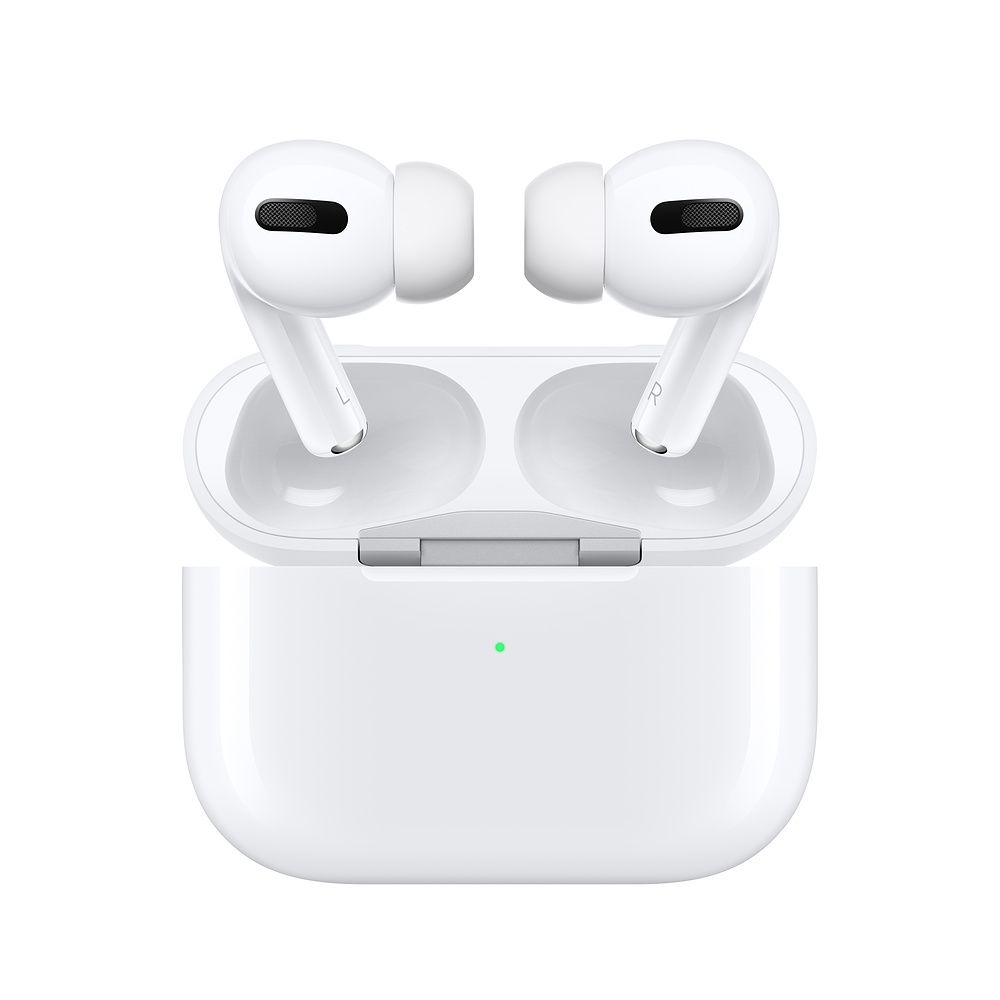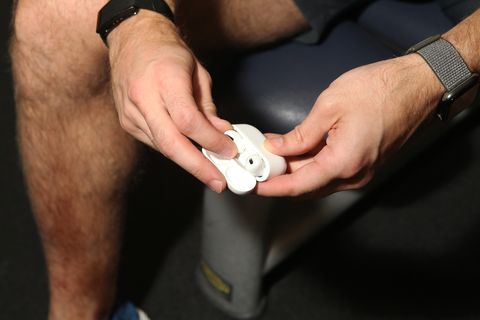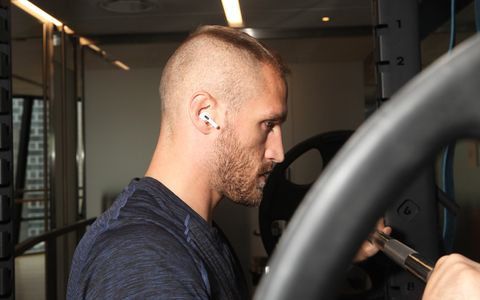We Got an Early Look at Apple's New AirPods Pro
Apple has finally unveiled its most anticipated new product of the year—and no, I’m not talking about the iPhone 11 Pro that dropped in September.
The tech company skipped out on the bright lights of its keynote event to debut the AirPods Pro, a fully tricked-out version of its ubiquitous wireless earphones, in a press release this week. This upgraded edition of the buds carries the same ‘Pro’ moniker as the highest echelon of the latest iPhone, which signifies that the new AirPods aren’t just a slightly tweaked edition of the current product line. Instead, these will be in a class above the standard, which Apple has updated only once—and then only incrementally—since the launch in late 2016.
The AirPods Pro edition is available for pre-order now and will hit stores on October 30, but Men’s Health got early access to a pair ahead of the official release. I didn’t have much time to put the buds through their paces, so this isn’t a full review (that will come later), but I’ll give my first impressions of the new headphones from my initial wears.
New Class, New Looks
The most obvious change from OG AirPods is in the design. The Pro model adds silicone buds for an in-ear fit, and the signature stems—first thought to be a garish novelty, now a status symbol—are significantly shorter, while the bud itself is more bulbous. The tips, which come in three sizes, fit similarly to other in-ear headphones I’ve tried. Apple has introduced a software test to check the fit, however, which is a first in my experience.
Apple
There are also a vent system on each bud, which the company claims will work to equalize pressure in the ear, presumably from the seal created by the tips. The tap controls from the standard model are replaced by a new “force sensor” on each stem, a haptic zone that you have to squeeze to activate. This is actually much simpler than the previous tap-based setup, and I got used to controlling my music within minutes of wear. The Pro case, which includes wireless charging functionality, is horizontally oriented and slighter larger than the standard version. Apple claims the Pro will have the same 5-hour battery capacity as the standard model, with up to 24 hours of playtime with the case.
Jason Speakman/Men’s Health
Smarter Sound
There are also improvements under the hood. The AirPods Pro has the same H1 chip as second-gen AirPods, but there are two microphones that work in tandem with the software to block out noise. That’s why Apple calls its noice cancelling feature “Active,” while other in-ear headphones depend solely on the seal provided by silicone tips to keep the listener in their own aural bubble.
Jason Speakman/Men’s Health
The aforementioned vent system and software work together to achieve the opposite effect for a Transparency mode, which makes it easier to let sound in while maintaining the audio playback. Both features are controlled by the force sensors—a long hold will switch between the two—opening or closing yourself off from the outside world. (You can also control this on your iPhone in the Control Center.) I walked through a busy train station wearing the buds and alternated between settings. There was a drastic difference between the two, which I’m interested to explore further.
Overall First Thoughts
We took the AirPods Pro into the gym (of course) for a quick wear test. The fit stayed snug through a few goblet squats, and the noise cancelling feature blocked out the worst of the fitness club playlist blaring over the speakers. I’ll go into greater detail once I have a chance to do a full wear test, but the Pro looks to be a solid workout option, especially with the improved IPX4 sweat- and water- resistance rating.
Jason Speakman/Men’s Health
All these additions and improvements don’t come cheap. The AirPods Pro will cost $249, almost $100 more than the standard version of AirPods ($159).
Time will only tell if people think the upgrades are worth the extra cost—silicone tips aren’t exactly groundbreaking for earbuds, but the custom fit test option is unique and the noise cancellation works well—but Apple is banking on the Pro crowd to gravitate toward the best option available.
Source: Read Full Article




